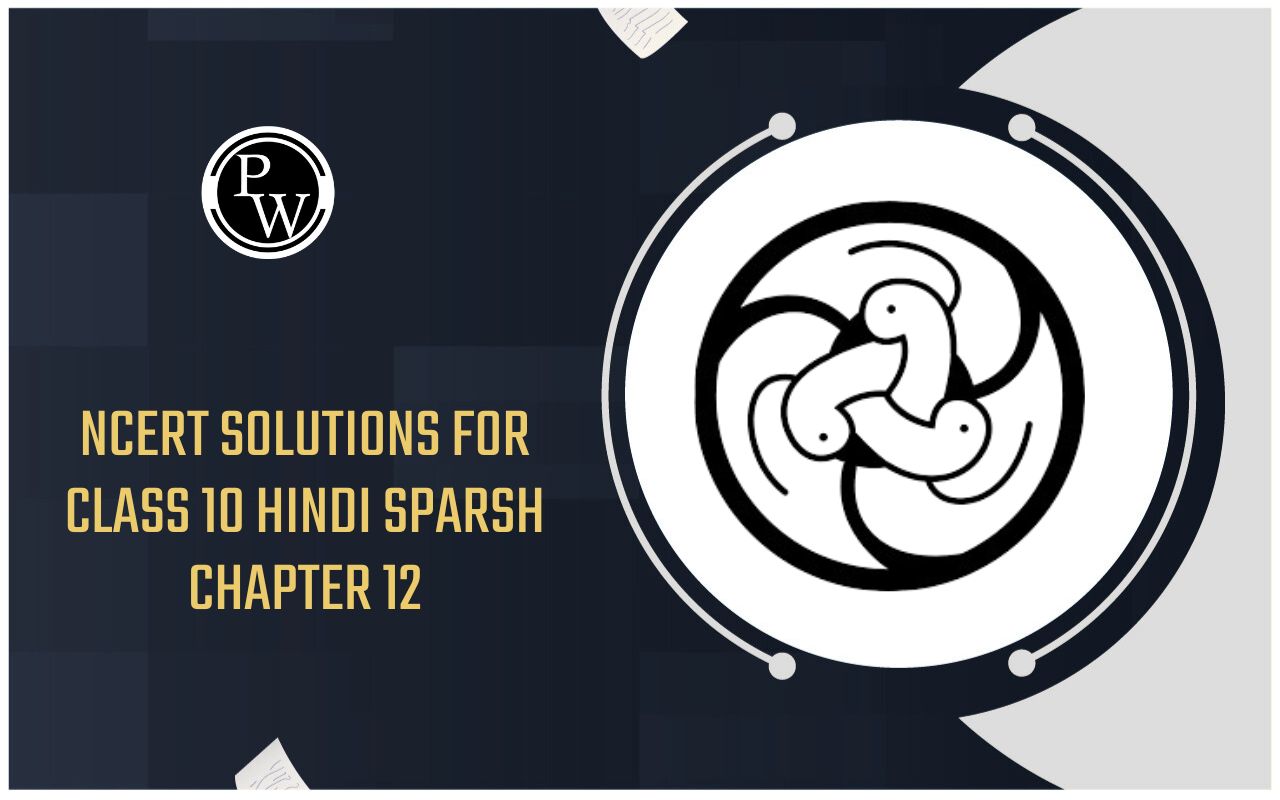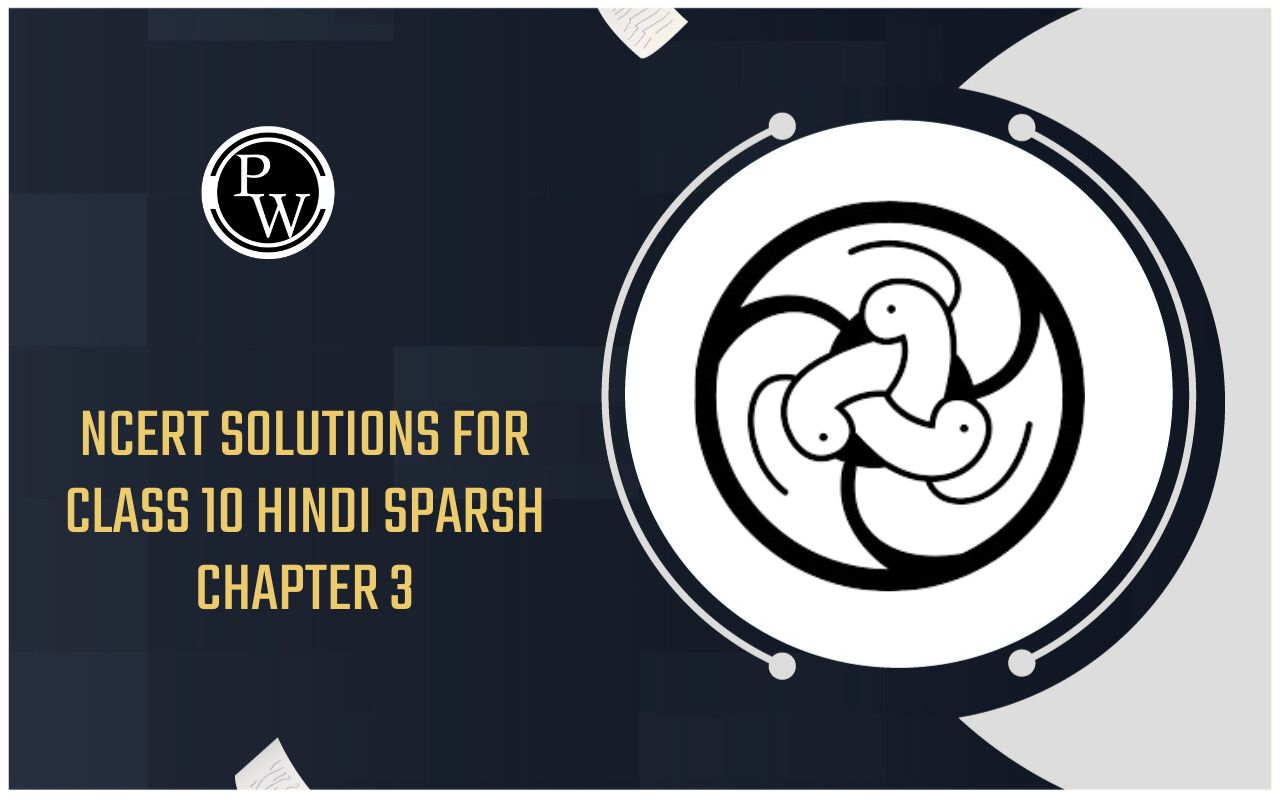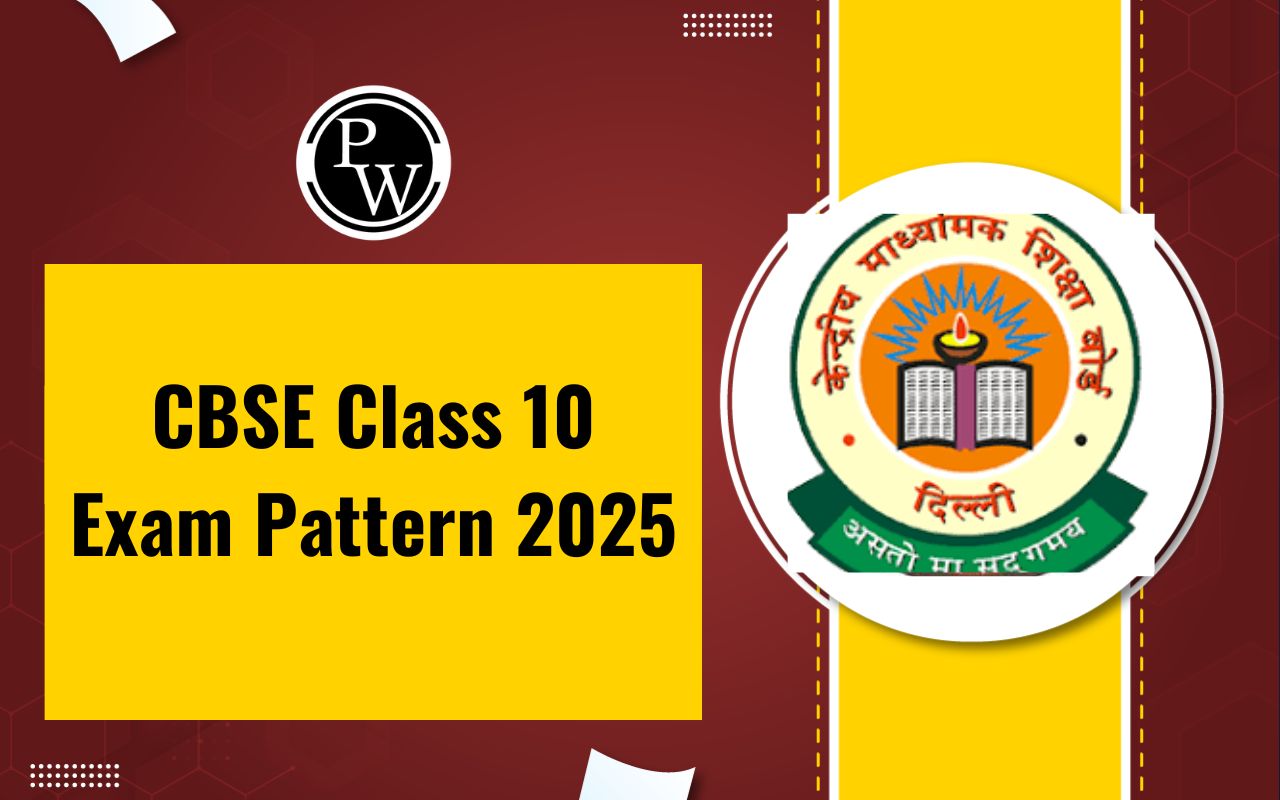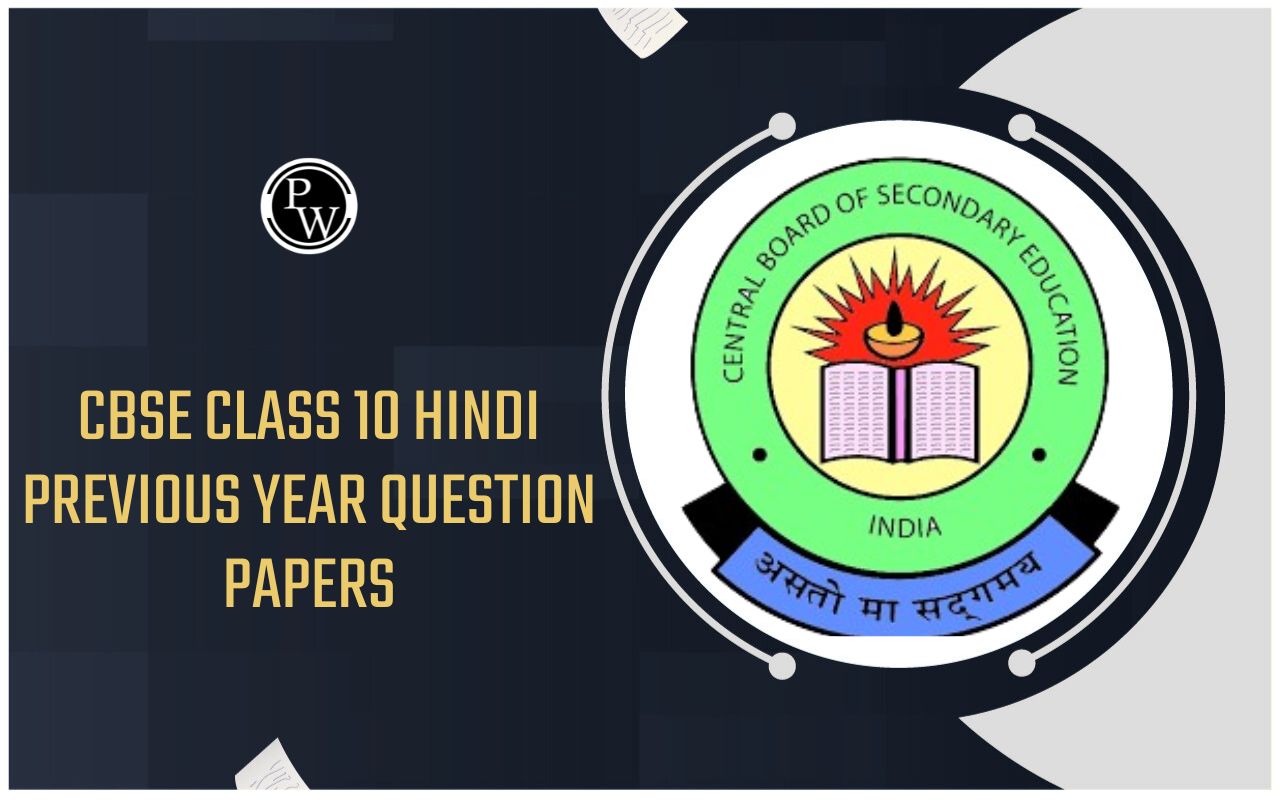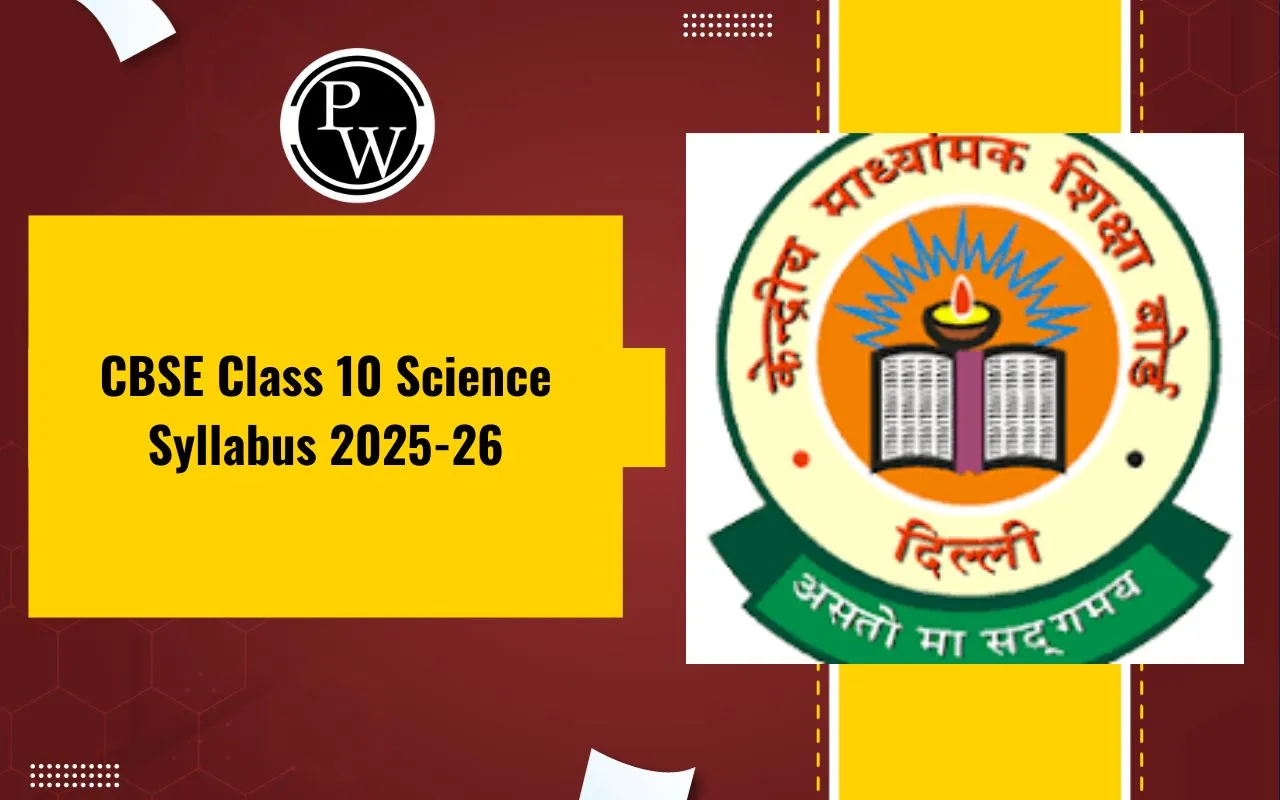
Important Questions for Class 10 Maths Chapter 7: At Physics Wallah, coordinate geometry is provided along with step-by-step solutions. It is recommended that students who are getting ready for the board exams practise these Important Questions for Class 10 Maths Chapter 7 to achieve good scores in the exam. Students can practise answering any problem from this chapter that may come up on the exam by answering these questions. Students' confidence will grow, and revision will be aided by answering these questions.
These concepts are crucial for board exams and are frequently asked in CBSE exam papers through short-answer, long-answer, and application-based questions. Practicing these important questions helps students strengthen their understanding, improve accuracy, and familiarize themselves with the exam pattern.
Important Questions for Class 10 Maths Chapter 7 Overview
The Important Questions for Class 10 Maths Chapter 7 have been provided by Physics Wallah in an easy-to-understand format for students to study. These questions are similar to the ones in the actual paper. Since we completely adhere to the CBSE norms in this area, students will most likely find these questions common in their question paper. Students are introduced to coordinate geometry in mathematics in this chapter.Important Questions for Class 10 Maths Chapter 7
By practicing the sums that are common and likely to be on the test, this article teaches students how to get ready for exams. Since mathematics is a difficult topic to study on your own, students can use the Important Questions for Class 10 Maths Chapter 7 to ace their exams. Students can complete the questions as part of their revision to help them prepare and do well on the Class 10 boards, which are very significant.CBSE Important Questions for Class 10 Maths
Important Questions for Class 10 Maths Chapter 7 Coordinate Geometry
Coordinate Geometry
Coordinate geometry uses a variety of graphs and lines to illustrate how geometry and algebra are related. The following are some of the ideas this chapter discusses:History of Coordinate Geometry
Rene Descartes, a French mathematician, is credited with developing coordinate geometry as the first technique to describe point locations. Later on in his investigation, he concluded that coordinate geometry might be used to find various curves and lines using equations.
He was the pioneer in establishing the connection between algebra and geometry. The coordinate plane is referred to as the cartesian coordinate plane, and the coordinates of a point are called cartesian coordinates in honour of his highly valuable work.
Coordinates
The different places on the plane are known as coordinates. We can determine the precise location of the point by utilising the x- and y-axes. Locating anything is considerably simpler when utilising a grid system since all we have to do is figure out which cell—the point where the rows and columns intersect—that the point is in.Coordinate Plane
Different points are positioned on a coordinate plane in coordinate geometry. Typically, there are two distinct scales: the y-axis, which is at a right angle to the plane, and the x-axis, which is perpendicular to it. The point of origin, which is often at point 0, is the location where the x and y axes converge. Coordinate geometry is a very basic geometry that locates a point on a plane using pairs of numbers.Important Questions for Class 10 Maths Chapter 7 Coordinate Geometry
Q1: Find a relation between x and y such that the point (x, y) is equidistant from the points (7, 1) and (3, 5).
Solution:
Let P(x, y) be equidistant from the points A(7, 1) and B(3, 5). Then, AP = BP AP 2 = BP 2 Using the distance formula, (x – 7) 2 + (y – 1) 2 = (x – 3) 2 + (y – 5) 2 x 2 – 14x + 49 + y 2 – 2y + 1 = x 2 – 6x + 9 + y 2 – 10y + 25 x – y = 2 Hence, the relation between x and y is x – y = 2.Q2: Find the distance of the point P (2, 3) from the x-axis.
Solution:
We know that, (x, y) = (2, 3) is a point on the Cartesian plane in the first quadrant. x = Perpendicular distance from y-axis y = Perpendicular distance from x-axis Therefore, the perpendicular distance from x-axis = y coordinate = 3. Q3: Find the coordinates of the points of trisection (i.e., points dividing into three equal parts) of the line segment joining the points A (2, – 2) and B (– 7, 4).Solution:
Let P and Q be the points of trisection of AB, i.e., AP = PQ = QB. Therefore, P divides AB internally in the ratio 1: 2. Let (x 1 , y 1 ) = (2, -2) (x 2 , y 2 ) = (-7, 4) m 1 : m 2 = 1: 2 Therefore, the coordinates of P, by applying the section formula,
Therefore, P divides AB internally in the ratio 1: 2. Let (x 1 , y 1 ) = (2, -2) (x 2 , y 2 ) = (-7, 4) m 1 : m 2 = 1: 2 Therefore, the coordinates of P, by applying the section formula, 
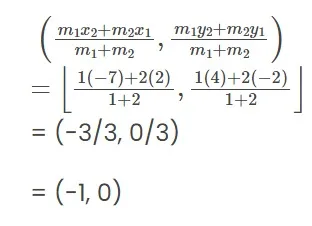 Similarly, Q also divides AB internally in the ratio 2: 1. and the coordinates of Q by applying the section formula,
Similarly, Q also divides AB internally in the ratio 2: 1. and the coordinates of Q by applying the section formula, 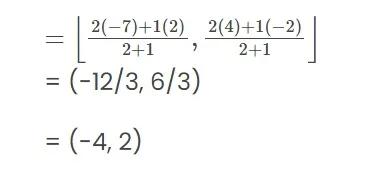 Hence, the coordinates of the points of trisection of the line segment joining A and B are (–1, 0) and (– 4, 2).
Hence, the coordinates of the points of trisection of the line segment joining A and B are (–1, 0) and (– 4, 2).
Q4: Find the ratio in which the line segment joining the points (– 3, 10) and (6, – 8) is divided by (– 1, 6).
Solution:
Let the ratio in which the line segment joining ( -3, 10) and (6, -8) is divided by point ( -1, 6) be k:1. Therefore by section formula,Q5: Find the area of the triangle formed by joining the mid-points of the sides of the triangle whose vertices are (0, –1), (2, 1) and (0, 3). Find the ratio of this area to the area of the given triangle.
Solution:
Let the vertices of the triangle be A(0, -1), B(2, 1) and C(0, 3). Let D, E, F be the mid-points of the sides of this triangle. Using the mid-point formula, coordinates of D, E, and F are: D = [(0+2)/2, (-1+1)/2] = (1, 0) E = [(0+0)/2, (-1+3)/2] = (0, 1) F = [(0+2)/2, (3+1)/2] = (1, 2) We know that, Area of triangle = ½ [x 1 (y 2 – y 3 ) + x 2 (y 3 – y 1 ) + x 3 (y 1 – y 2 )] Area of triangle DEF = ½ {(1(2 – 1) + 1(1 – 0) + 0(0 – 2)} = ½ (1 + 1) = 1 Area of triangle DEF = 1 sq.unit Area of triangle ABC = ½ {0(1 – 3) + 2(3 – (-1)) + 0(-1 – 1)} = ½ (8) = 4 Area of triangle ABC = 4 sq.units Hence, the ratio of the area of triangle DEF and ABC = 1 : 4.Q6: Find the value of k if the points A(2, 3), B(4, k) and C(6, –3) are collinear.
Solution:
Given, A(2, 3)= (x 1 , y 1 ) B(4, k) = (x 2 , y 2 ) C(6, -3) = (x 3 , y 3 ) If the given points are collinear, the area of the triangle formed by them will be 0. ½ [x 1 (y 2 – y 3 ) + x 2 (y 3 – y 1 ) + x 3 (y 1 – y 2 )] = 0 ½ [2(k + 3) + 4(-3 -3) + 6(3 – k)] = 0 ½ [2k + 6 – 24 + 18 – 6k] = 0 ½ (-4k) = 0 4k = 0 k = 0Q7: Name the type of triangle formed by the points A (–5, 6), B (–4, –2) and C (7, 5).
Solution:
The points are A (–5, 6), B (–4, –2) and C (7, 5). Using distance formula, d = √ ((x 2 – x 1 ) 2 + (y 2 – y 1 ) 2 ) AB = √((-4+5)² + (-2-6)²) = √(1+64) =√65 BC=√((7+4)² + (5+2)²) =√(121 + 49) =√170 AC=√((7+5)² + (5-6)²) =√144 + 1 =√145 Since all sides are of different lengths, ABC is a scalene triangle. Q8: Find the ratio in which the line x – 3y = 0 divides the line segment joining the points (-2, -5) and (6, 3). Find the coordinates of the point of intersection.Benefits of Practicing Important Questions for Class 10 Maths Chapter 7
-
Covers Key Concepts: Focuses on essential topics like distance formula, section formula, and area of a triangle.
-
Aligned with CBSE class 10 Syllabus: Questions are based on the latest CBSE guidelines and exam pattern.
-
Enhances Problem-Solving Skills: Improves accuracy and speed in calculations.
-
Boosts Exam Confidence: Helps students get familiar with important question types.
-
Includes PYQs & class 10 Sample Papers: Provides exposure to previous years' questions for better exam preparation.
-
Improves Time Management: Regular practice helps in efficiently managing time during exams.
Important Questions for Class 10 Maths Chapter 7 FAQs
Why do we need coordinate geometry?
What is coordinate geometry used for in real life?
What is father of coordinate geometry?
What is the concept of coordinates?
Is coordinate geometry easy?


